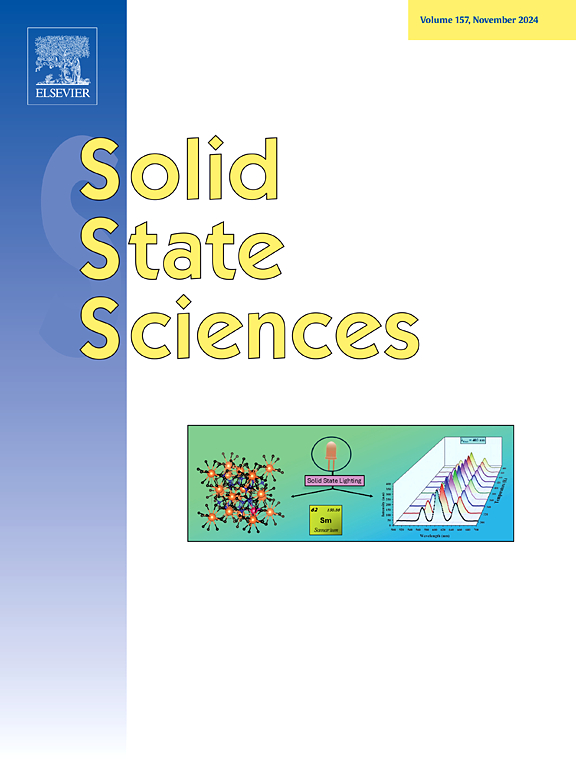退火和加氢对(TiNbMoTaW)Nx高熵合金氮化膜超导转变温度的影响
IF 3.4
3区 化学
Q2 CHEMISTRY, INORGANIC & NUCLEAR
引用次数: 0
摘要
最近的研究表明,在Ti0.2Nb0.2Mo0.2Ta0.2W0.2高熵合金薄膜中加入氮,导致相应的(TiNbMoTaW)1.0Nx氮化物的超导转变温度TC显著提高。在这里,我们独立地报告了后续退火的影响和额外的氢掺入对这些薄膜的影响,这将导致TC的进一步增强。然而,没有观察到预期的TC增加,相反,薄膜在800°C真空退火和在这些薄膜中加入氢都导致TC降低。对结果的分析表明,在退火的情况下,这与氮从薄膜中释放有关,在加氢的情况下,这与费米能级态密度和电子-声子相互作用的降低有关。本文章由计算机程序翻译,如有差异,请以英文原文为准。

Impact of annealing and hydrogenation on the superconducting transition temperature of (TiNbMoTaW)Nx high entropy alloy nitride films
Very recently it was shown that incorporation of nitrogen into Ti0.2Nb0.2Mo0.2Ta0.2W0.2 high-entropy alloy films leads to a considerable superconducting transition temperature TC enhancement in corresponding (TiNbMoTaW)1.0Nx nitrides. Here we report, independently, about the impact of subsequent annealing and the influence of additional hydrogen incorporation on these films, which should lead to a further enhancement of TC. However, the expected TC increase was not observed, on the contrary, both annealing of films at 800 °C in vacuum and incorporation of hydrogen into these films led to a reduction of TC. Analysis of the results shows that in case of annealing this is related to nitrogen release from the films, in case of hydrogenation to reductions of the density of states at the Fermi level and of the electron-phonon interaction.
求助全文
通过发布文献求助,成功后即可免费获取论文全文。
去求助
来源期刊

Solid State Sciences
化学-无机化学与核化学
CiteScore
6.60
自引率
2.90%
发文量
214
审稿时长
27 days
期刊介绍:
Solid State Sciences is the journal for researchers from the broad solid state chemistry and physics community. It publishes key articles on all aspects of solid state synthesis, structure-property relationships, theory and functionalities, in relation with experiments.
Key topics for stand-alone papers and special issues:
-Novel ways of synthesis, inorganic functional materials, including porous and glassy materials, hybrid organic-inorganic compounds and nanomaterials
-Physical properties, emphasizing but not limited to the electrical, magnetical and optical features
-Materials related to information technology and energy and environmental sciences.
The journal publishes feature articles from experts in the field upon invitation.
Solid State Sciences - your gateway to energy-related materials.
 求助内容:
求助内容: 应助结果提醒方式:
应助结果提醒方式:


